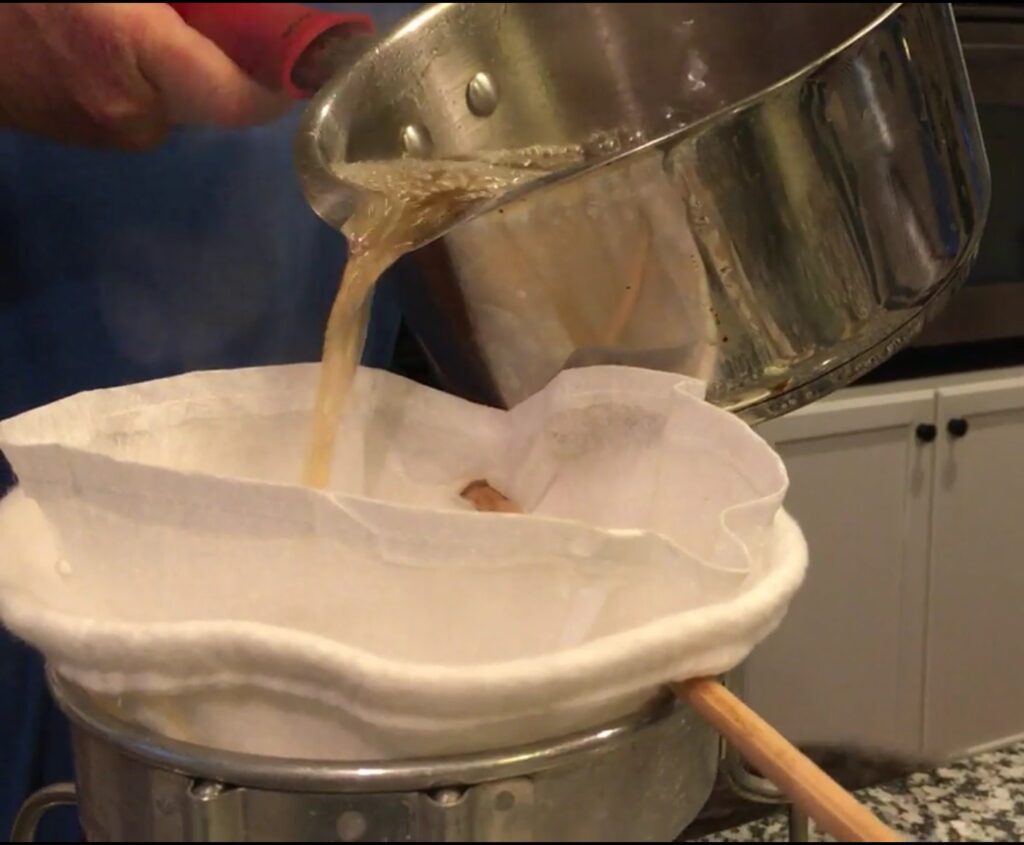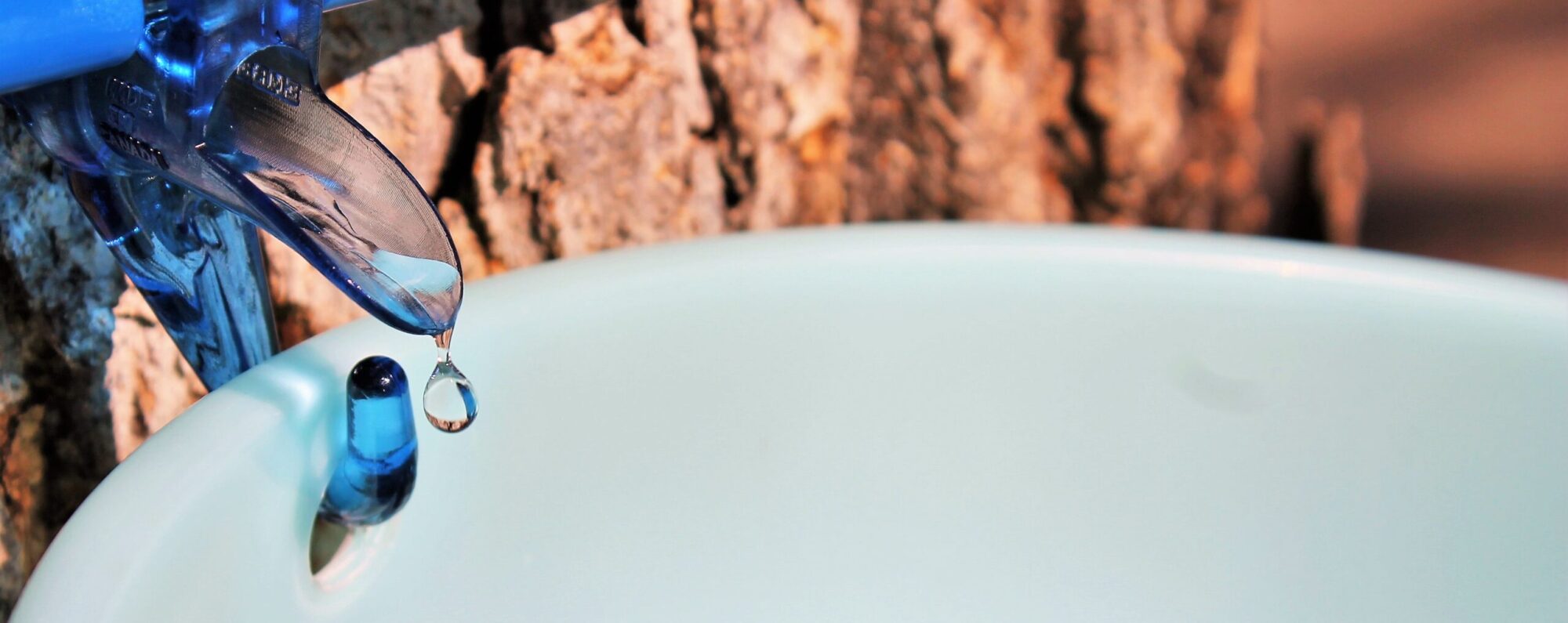
Why does my filter seem clogged or slow? This can have two answers:
1. The filter is full of sugar sand! Our one-quart filters are designed for small batches (2 to 3 quarts) and after that much syrup, they will start to clog up with sugar sand. To solve this problem, have a second filter set up to use to finish your batch.
2. Alternately, the syrup could be cooling down too much in the filter which makes it flow slower. This is an easy fix: pour only enough to fill one jar at a time. Just set the pan aside, cover it with a lid to keep the heat in, and keep refilling the filter as the syrup level gets down to about ½”. Note: be sure when lifting the lid off your pan, you tip it away from the pan so the moisture does not fall back into the syrup.
Why is the syrup dripping out the upper sides of the filter?
Our filters are made from filter material all the way up so syrup will go through all of it. If you fill it up to the top, the upper part of the filter will get saturated and syrup will start to drip through. Keep the syrup level low (as described in #1) and only as wide as the jar you’re filling.
How do I clean the thick filter?
Your filters should dry out between uses and could grow bacteria is allowed to remain wet. After syrup making, rinse the filter with hot water until all the sugar sand is removed. Filters may remain slightly darker after use and that is okay. Once through rinsed, hang upside down and open so it can drip dry. We usually balance it on a dowel (pointy end up) and prop it in a jar. Do not wring or twist the filter as that can break down the fibers and distort the shape.
Why is my filter brownish?
It is normal for the filter to take on a little brown color after use. Just make sure you’re thoroughly cleaning the filter after each boil with hot water. The spray setting on your sink nozzle works best to rinse away the sugar sand.
Can I reuse filters next year?
Yes! These filters last for a long time as long as they are properly cared for. Don’t wring or twist and always thoroughly dry before putting away. At the end of the season store in a sealed bag in a dry area.

